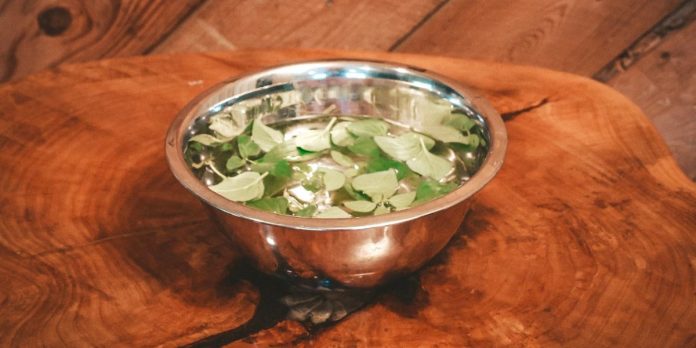Got a basketful of foraged treasures?
Don’t eat them just yet. Insects, bacteria, and dirt all like to hide in plant matter, so it’s wise to clean your finds before you toss them into a recipe.
There are a few ways to clean foraged plants. The best one for you will depend on the type of plant you found, what you intend to do with it, and your personal preferences.
Read on to learn how to clean foraged plants correctly and preserve the integrity of your finds.
How to Clean Different Types of Foraged Plants
Leafy Greens & Herbs
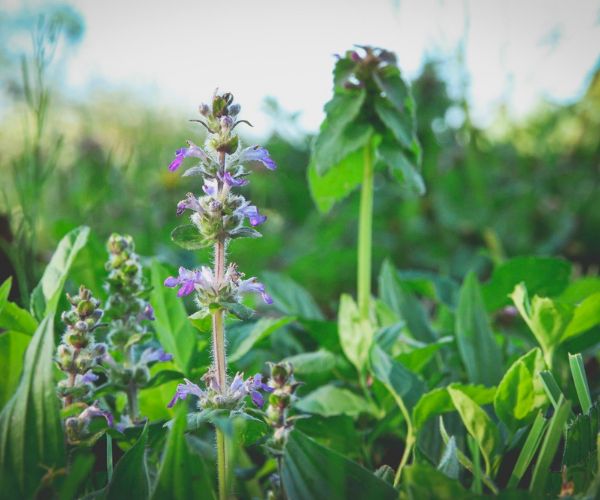
The cleaning process for delicate leafy greens like dandelion and chicory begins as soon as you harvest them. You’ll snip the leaves at the plant’s stem, then turn them upside-down and gently shake off dirt and insects.
Once you return home, fill a serving bowl with cold water and place the leaves in it. Some people like to add vinegar, which can help disinfect the plant matter, but it isn’t essential and could negatively affect the flavor. Work your hands through the leaves, fingering each one to remove stubborn dirt or mud.
The debris will come off and sink to the bottom of your bowl, while the leaves will stay afloat or suspended in the water.
Once the dirt has lifted, take the leaves out of the bowl. You can spin them dry in a salad spinner or air-dry them on a rack or paper towel. Resist the urge to rub or pat them dry because this can damage delicate plants and spoil the flavor.
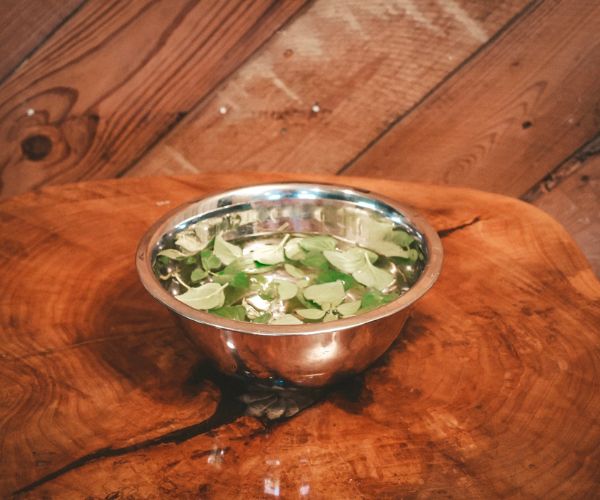
Robust Vegetables
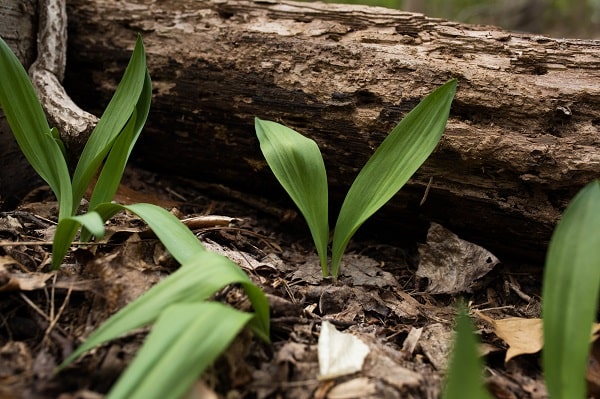
You don’t have to worry about damaging more robust vegetables like wild leeks or asparagus, so you can simply rinse them in the sink with a colander. Toss them a few times in the water to get all the dirt off. When they’re clean, remove them and pat them dry with a paper towel.
If you’re lucky enough to find layered vegetables like cabbages in the wild, remove the outer layer and discard it during harvest. The outer layers are the dirtiest and most insect-ridden, so they won’t have a great flavor and are more likely to host bacteria. It’s best to stay safe and not bring them home with you at all.
Roots and Tubers
As you pull up foraged roots and tubers like burdock and potatoes, manually remove as much dirt as possible.
Roots are tough and can take a beating, so feel free to get rough and hit them against something to loosen up the debris. Before bringing root veg inside your home, hose it down to remove chunks of clingy mud and grass. That way, you’ll keep dirt outside where it belongs.
Once at the sink, place roots under running water and scrub them with a fresh scouring pad until all the dirt is gone. You can also use a vegetable brush if you have one.
Remember, pathogens can transfer from your knife to the meat of the root as you slice through the skin. It’s essential to clean a root’s skin thoroughly, even if you plan to peel it off.
Mushrooms
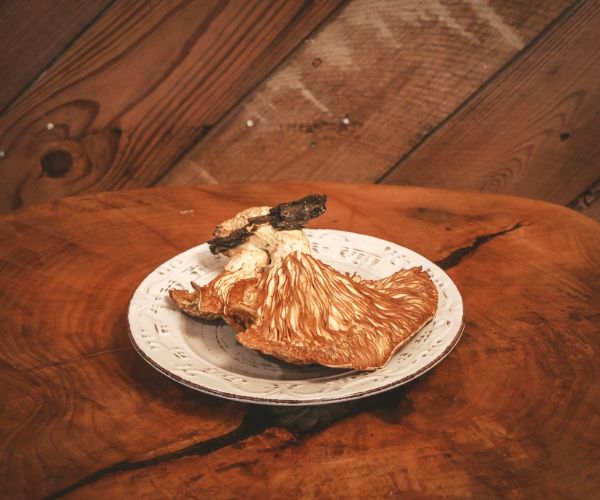
Ok, so mushrooms aren’t technically a plant. But if they’re going down your gullet, cleaning them well is essential. As you harvest, avoid pulling mushrooms directly out of their substrate. You’ll likely also pull away decomposing bark or dirt, creating more work for yourself later on.
Instead, cut them with a knife a few centimeters down the stalk below the fruiting body to harvest cleanly.
It’s very common to see bugs actively eating the mushrooms you gather, so pick them out as you go.
Be especially careful with gilled varieties, like chanterelles and oysters. Dirt and bugs accumulate between the gills, so clean them out thoroughly. Be sure to separate clusters or shelves of fruiting bodies to clean between them.
If you plan to make sauce or soup, you can rinse shrooms in the sink with a spray nozzle and colander.
If you plan to dry or sauté them, avoid using a direct water source. Instead, use a toothbrush or a damp towel to wipe dirt and debris away. Unlike other foraged goods, you should avoid submerging the mushrooms in water. Waterlogged fungi hold onto moisture and mold, soon becoming unsafe to eat.
Read: How to identify turkey tail mushroom
Fruits and Berries
Berries are delicate. You should never rinse them under running water because it can bruise or crush them. Instead, soak them in a water bowl and let them bob around for a minute. Then, remove them and gently shake them to get the water out.
Alternatively, you could place them in a colander and put the colander inside a larger bowl of water.
Once the dirt has lifted, remove the colander and set it aside so the berries air-dry. This method reduces contact between your hands and the berries and could keep things more sanitary. However, it only works well if you have a small number of berries. Big batches could get bruised from overcrowding in the colander.
Fresh fruits are more robust, and you can rinse harder varieties, like apples and peaches, under running water or soak them in a bowl to remove debris. Then, peel the skin off to enjoy the tasty meat inside.
Read: How to know if a berry is poisonous
Seaweed
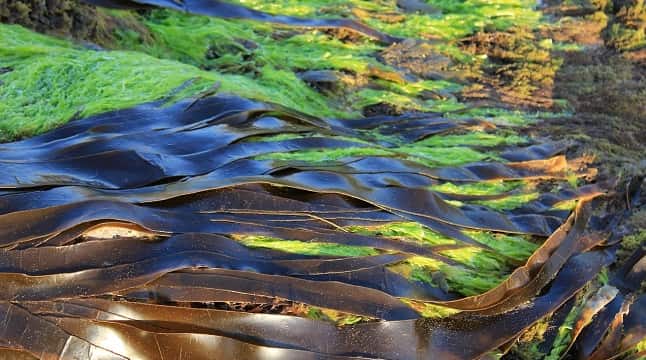
If you live near the ocean, seaweed provides pounds of palatable plant matter to sink your teeth into. But we don’t clean marine veg the same way we do terrestrial plants.
Saltwater marine plants tend to be reasonably sanitary when foraged from a clean water source in the wild. The bacterial dangers come primarily from mass production and the supply chain.
However, they’re not exactly clean—bits of sand and thriving colonies of microcrustaceans may have accumulated on them. You want to remove these freeloaders before bringing the seaweed home, so shake and swirl it around vigorously in the saltwater as you harvest it. Run your fingers through the weeds, peeling off foreign matter and thoroughly cleaning the plants.
After this, the cleaning process depends on the type of seaweed. You can rinse it again in your freshwater sink to ensure it’s clean, but this could take away from the prized umami brine flavor. Ultimately, it’s down to your tastes.
Golden Rules for Cleaning Foraged Plants
Since foraging responsibly always requires gathering from safe wild areas that have never been sprayed with pesticides or herbicides, you have a bit more sanitary freedom than you might with supermarket produce.
Cleaning foraged plants is more about preserving the food’s flavor and preventing rot rather than completely sterilizing it.
However, there is always a risk of food-borne pathogens with anything you eat. Always put your safety first. If you are unsure about a plant or suspect it has been contaminated, don’t eat it. And no matter what type of edible you harvest, it’s wise to follow the general “golden rules” for cleaning foraged plants.
Trim Plants Immediately
Remove any rotting or damaged plant parts and discard them immediately. Damage invites rot; rot spreads, and you want to mitigate the risk of contamination to other parts of the plant.
The exception is if trimming the plant will disrupt structural integrity within the part you intend to eat. You don’t want to slice into the meat of a plant to cut off a rotten piece because this will just expose the flesh to more pathogens and increase the rate of decay. For example, say you found wild peaches, but one has a dark spot. Don’t cut it out until right before you eat it.
Store Plants Before Washing
Never wash plants with water until you’re ready to use them. Have you picked a wheelbarrow full of wild onions? Leave them in a cool, dark place and take them out to clean as needed for your recipes.
When you wash plants with water, moisture gets trapped in the crevices. It promotes rot and causes the food to spoil much more quickly. This isn’t a problem if you’re about to eat them, but if you leave them for a few days, they will become unsanitary.
Avoid Excessive Washing
There’s no need to scrub plants roughly unless they’re root vegetables. Leaves and more delicate plants like mushrooms and berries will get bruised from excessive washing. Even if a plant looks intact after a rough wash, too much cleaning could cause microtears in the skin.
These little holes can allow bacteria inside and contaminate the plants. Likewise, you should never wash foraged plants with any sort of soap, bleach, or detergent. You don’t even need a vegetable wash.
Disinfect Tools and Workspaces
Always wash your hands with soap for at least 20 seconds before handling foraged plants. This will prevent any stray bacteria you could be carrying from transferring to your food.
Likewise, thoroughly wash knives, cutting boards, colanders, countertops, and everything else that comes into contact with plants before and after cleaning.
Keep in mind that cleaning foraged plants is largely situational. The information here is a good guideline but can change depending on what you’re personally comfortable with and the resources you have at hand.
Now that you know how to clean wild food, you’re ready to hit the forest for some foraging today!

